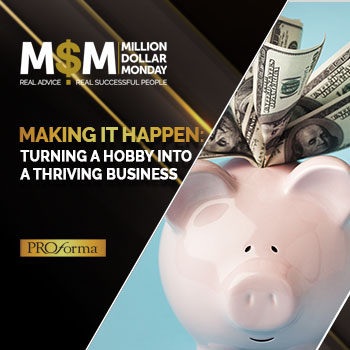WHEN TRYING TO break new ground with kitchen
and household promotions, distributors may be well-served to recall the classic children’s fable about the country mouse and the city mouse. To briefly summarize, the story features two mice each unable to tolerate the other’s habitat. The city mouse cannot bear the simplicity of the country mouse’s diet, and the country mouse is horrified by the constant dangers of the city.
So, to apply the lessons of the fable, it’s important to consider end-users’ comfort zones and give them products they’ll actually like. Choose garden tools for the country mouse, a martini set for the city mouse and maybe a travel mug to help make the suburban mouse’s* long commute seem not so long.
*To be included in the yet-unpublished Promo Marketing Fable Collection, Volume 1.
COUNTRY LIVING
A rural-home setting is likely to conjure a wide variety of mental images, but in relation to kitchen and household items, one is certainly ubiquitous: the idea of a home-cooked meal. Whether it is an apple pie cooling on a windowsill, or a fresh batch of chocolate-chip cookies, those who cook make an excellent market for items themed around the kitchen.
Michael Moore, executive vice president of sales for Lakeville, Massachusetts-based Bay State Specialty Company, said, “The thing about kitchen products is that we have a very emotional attachment to our kitchen. If you think about the space, we start there in the morning, we end there in the evening. Whenever we have parties or groups of people in our house, we always congregate around the kitchen.” He continued, saying the emotional connection to the kitchen would carry over to the cookware involved. “Every time you pull that product out of the drawer or the cabinet, you’re really getting very high exposure for very little cost. I’m talking advertising-dollar wise,” said Moore. The best items then, for the cooking-inclined country mouse, would be something used near-daily, like a trusty knife or spatula.
Any country mouse will tell you, however, though having the right tools is important, the recipe and ingredients are at the heart of the cooking experience. Understanding this, Symphony Handmade Papers, based out of Santa Fe, N.M., offers a special line of recipe bookmarks. The bookmarks come with customizable recipes and a second handmade sheet containing plantable seeds that correspond with said recipe. Lauri Sjoblom, president of Symphony Handmade Papers explained that while her products fit well into Moore’s earlier points about reusable items, they also have an additional personal dimension.
“I think people really enjoy getting something handmade,” she said. “Their reaction is, ‘Oh my gosh that is really beautiful!’ Then [when] they find out that they can plant it and grow something, it’s very exciting. So, there’s more of a personal feel to the pieces. Energetically, people can feel that.” Certainly too, any country mouse worth its promotional cooking utensils would be thrilled to have a new recipe, let alone one that comes with fresh ingredients.
THE BIG CITY
As opposed to their country brethren, city mice do not have much use for cookware. Preferring to grab what they can before rushing off to the office, a city mouse would have no idea what to do with a cake knife or packet of seeds, except to maybe shrug and hand it to the maid.
Antonia Pappas, senior product development manager for Washington, Missouri-based The Magnet Group, offered a solution. Instead of focusing on cooking, Pappas spoke about the kitchen’s entertainment and serving uses, and how there are many products that fill that niche. The city mouse, obviously more comfortable toasting martini glasses than toiling over a layer cake, would seem to be the perfect demographic for such items.
When selecting entertainment products, like bar or servingware, Pappas explained the user’s admiration for the product is more important than its actual utility, given that the product is likely to be used less, and also have a higher price point. In other words, it’s best to appeal to the city mouse’s sense of style.
“What we’re trying to bring to our industry are fabulous pieces [with] high-end appeal, something that when people open their retail catalogs they’re kind of drooling over already,” said Pappas, in reference to the company’s line of barware. She pointed out the importance of product appearance, noting more modern-looking items would appeal to a broader audience of end-users. Since modern designs often lack elaborate ornamentation, she said, they are less likely to clash with the decorative scheme of the end-user’s home. Pappas also added, “… Whether [the items] are priced higher [or not], they tend to lend themselves to a look of opulence,” which is critical for winning over the city mouse.



